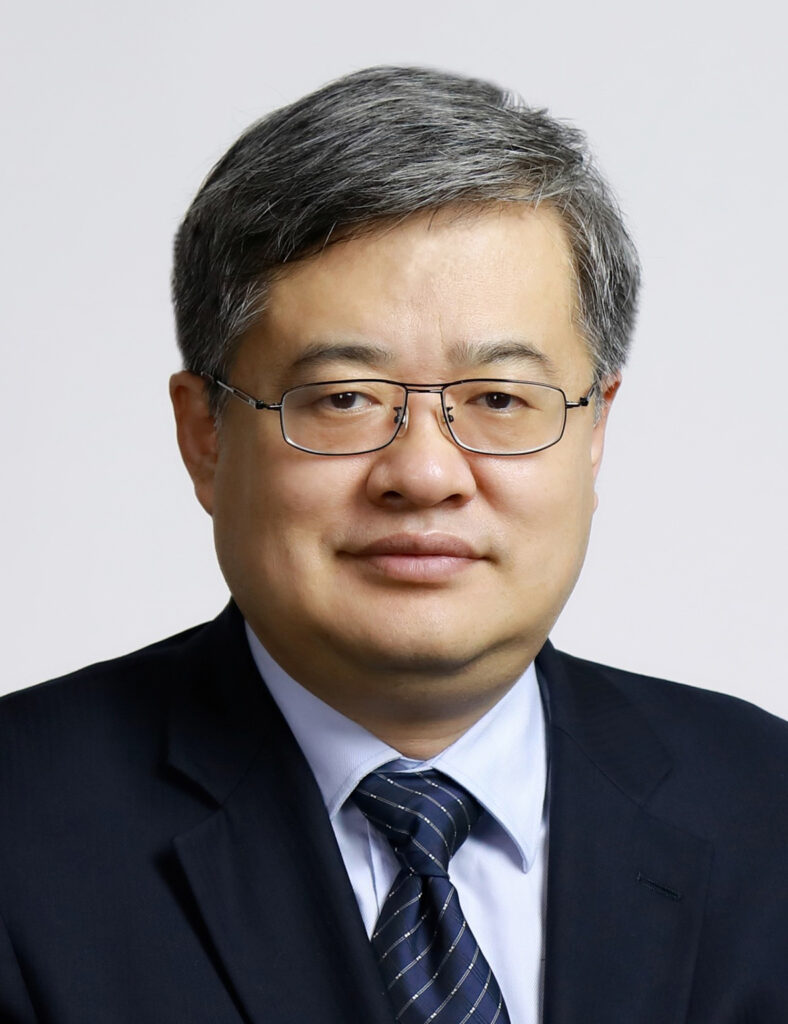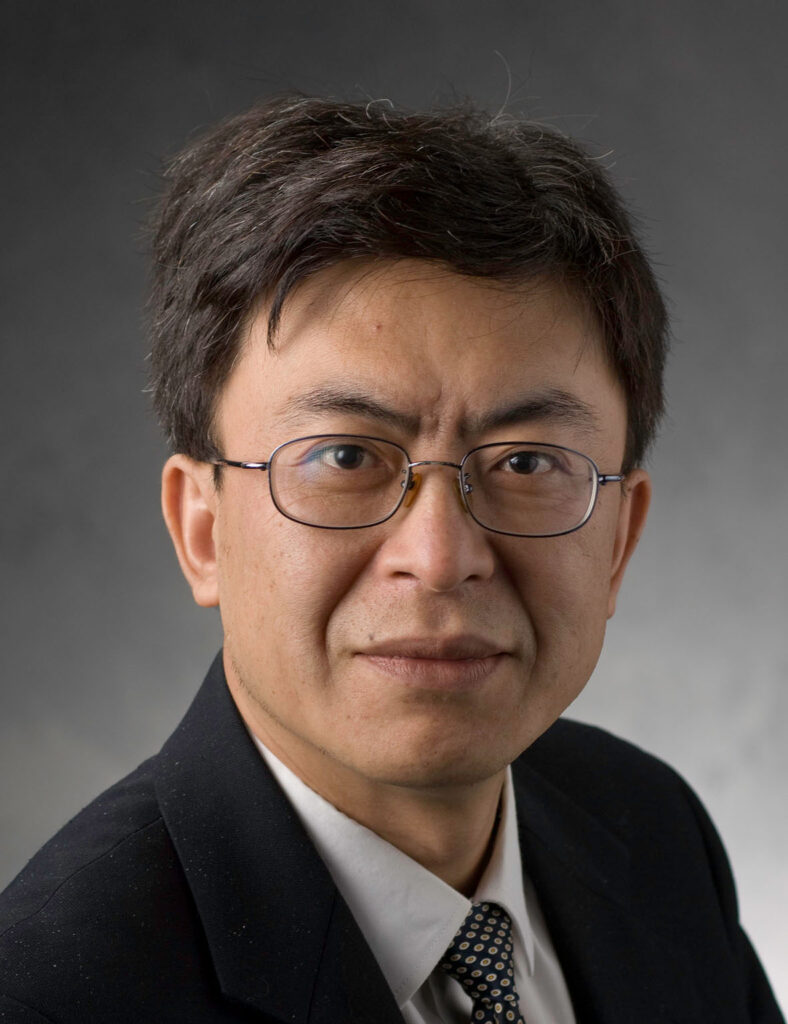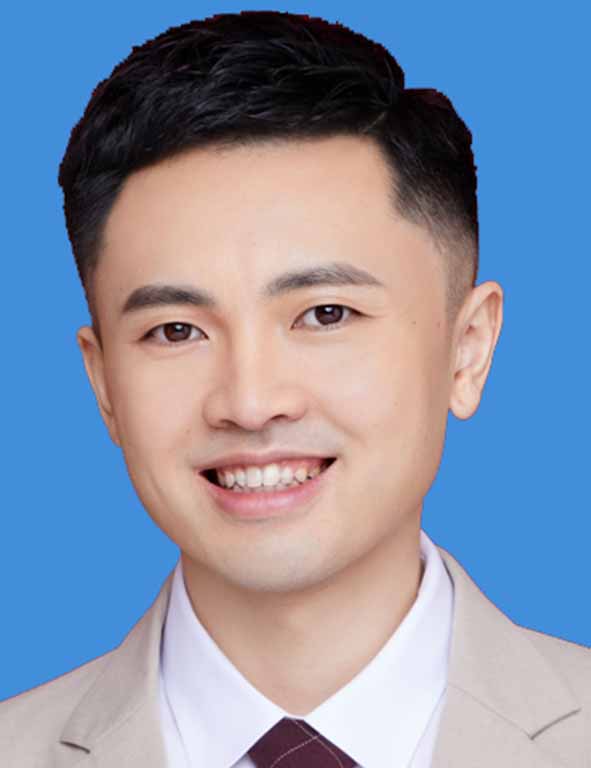Plenary Talk
Power Inspection Teleoperation Robot Technology in Complex Environment

Professor Aiguo Song
Robot Sensor and Control Laboratory
School of Instrument Science and Engineering
Southeast University
ABSTRACT
This report firstly introduces the background and importance of the power inspection teleoperation robot technology. Then the challenges of the inspection robot are put forward, and the key technologies are briefly discussed. The research work carried out by the Robot Sensor and Control Lab of Southeast University for the power inspection teleoperation robot in complex environment is reported. The research progresses and developments in our lab are introduced. Finally, the applications of the inspection teleoperation robots in different complex environments are reported, which based on the collaboration with some companies.
BIOGRAPHY
Aiguo Song received the Ph.D degree in Measurement and Control from Southeast University, Nanjing, China in 1996. From 1996 to 1998, he was an Associate Researcher with the Intelligent Information Processing Laboratory, Southeast University, China. From 1998 to 2000, He was an associate Professor with the School of Instrument Science and Engineering, Southeast University, China. From 2000 to 2003, he was the Director of the Robot Sensor and Control Lab, Southeast University, China. From April, 2003 to April, 2004, he was a visiting scientist with the Lab for Intelligent Mechanical Systems (LIMS), Northwestern University, Evanston, USA. He is currently the Professor with the School of Instrument Science and Engineering, Southeast University, China, and also the Director of Robot Sensor and Control Laboratory, the President of Nanjing Advanced Robotics Research Institute. His current interests concentrate on human-robot interaction teleoperation robot, force/tactile sensors, haptic display, space robot, rehabilitation robot, and power inspection robot. He has published more than 300 peer reviewed journal papers, and 200+ papers have been indexed by SCIE, and SCI cited time is 2500+. He received the best paper awards 13 times.
He is a member of Chinese Instrument and Control Association, IEEE senior member, Chair of IEEE Nanjing Section Robotics and Automation Society Chapter. He serves as Associate Editor for 5 SCIE indexed Journals, and served as Chair or Co-Chair of 30+ International Conference/Symposium. He was recipient of the second prize of the National Scientific and Technological Progress in 2017, and recipient of the National Outstanding Youth Fund of National Natural Science Foundation of China.
Plenary Talk
Wireless Networks for Industrial Automation: From WIA to 5G

Professor Haibin Yu
Shenyang Institute of Automation
Chinese Academy of Science
ABSTRACT
The continuous technology innovation on information and communication technology (ICT) drives cyber-physical fusion and motivates new industrial revolution. Industrial wireless network (IWN) is a representatively outstanding technology that helps integrate ICT with operation technology (OT). During the past decades, academia and industry have invested great efforts in developing IWN, such as WirelessHART, ISA100.11a and Wireless Networks for Industrial Automation (WIA). More recently, ITU and 3GPP also propose to develop ultra-reliable low delay communication (URLLC) for industrial automation.
This talk first introduces the fundamental communication requirements of industrial automation and discusses the challenges in developing IWNs. Then, a typical IWN technology family called WIA is introduced in detail including the system architectures, protocol stacks, applications and performances. Finally, the evaluation of WIA towards 5G is discussed and the future IWN is envisaged
BIOGRAPHY
Haibin Yu, Professor and Director of Shenyang Institute of Automation, Chinese Academy of Sciences, China. He serves as the Vice-Chair of Chinese Association of Automation, the Chair of China National Technical Committee for Industrial Process Measurement Control and Automation Standardization. He has published two books, authored or co-authored more than 200 papers, and held more than 50 patents. He and his research team develope the WIA-PA and WIA-FA standards specified as IEC 62601 and IEC 62948, respectively. He was elected as an ISA Fellow for his contributions in fieldbus technologies in 2011. He also serves as the Editor-in-Chief of Robotic and the Associate Editor-in-Chief of Information and Control. His research interests include industrial communication and networked control, industrial automation and intelligent manufacturing.
Plenary Talk
Computational approaches for guiding rational vaccine design: Case studies of HIV, HCV and COVID-19

Professor Matthew McKay
Departments of Electronic and Computer Engineering and Chemical and Biological Engineering
Hong Kong University of Science and Technology
ABSTRACT
This talk will describe how computational modelling and high-dimensional statistics can aid the rational design of vaccines. Approaches familiar in signal processing and physics will be introduced and applied to genetic sequence data of viruses measured from infected individuals. It will be described how such approaches can be used to build computational models that inform how viral fitness is mediated by correlated sets of genetic mutations, and to simulate viral evolutionary dynamics in individuals who present specific immune responses. When combined with experimental and clinical data, the talk will describe how the models may be used to rationally design new vaccine candidates for HIV and the hepatitis C virus (HCV). Recent progress on the impact of data analysis on vaccine development for COVID-19 and in guiding experiments to understand human immune responses against COVID-19 will also be discussed. Overall, this talk with highlight the important role that data analysis and computational methods can play in modern and future vaccine development.
BIOGRAPHY
Matthew McKay is a Professor of Electronic and Computer Engineering and Chemical and Biological Engineering at the Hong Kong University of Science and Technology (HKUST); previously holding the Hari Harilela Chair. He received his PhD from the University of Sydney in 2007. Matthew has held visiting positions at MIT’s Institute for Medical Engineering & Science and Stanford’s Statistics Department. His research interests fall at the intersection of disciplines, and include information and communication technologies, statistics and machine learning, and computational immunology. He has been selected as a Young Scientist of the World Economic Forum, a Young Scientist of the World Laureates Forum, and is a Fellow of the IEEE.
Matthew and his co-authors have received multiple paper awards, including the Stephen O. Rice Prize by the IEEE Communication Society and a Young Author Best Paper Award by the IEEE Signal Processing Society. He received the Young Investigator Research Excellence Award by the School of Engineering at HKUST, and the Best Young Researcher Award (Asia Pacific Region) by the IEEE Communication Society. He has served as Area Editor for the IEEE Signal Processing Magazine, and on the editorial boards of the IEEE Transactions on Wireless Communications and the mathematics journal, Random Matrices: Theory and Applications.
Keynote Talk
How much we can rely on the networks of the future? – Privacy and security of future networks

Professor Muhammad Ali Imran
James Watt School of Engineering
University of Glasgow
ABSTRACT
With growing reliance of our everyday life on digital connectivity, our concerns for the privacy preservation and security of our data are exponentially growing. In this talk, we will explore what potential use cases are driving this increasingly popular vision of very private and highly secure wireless and wired networks. We will focus a bit more on wireless network challenges in terms of both privacy and security. We will then share some recent progress and findings on how future technologies designed for other purposes can actually help us achieve our goal of privacy preservation and security enhancement of wireless networks. Two particular technologies that will be re-visited in this light are block-chain for privacy preservation and intelligent reflective surfaces for security enhancement.
BIOGRAPHY
Muhammad Ali Imran (M’03, SM’12) Fellow IET, Senior Member IEEE, Senior Fellow HEA is Dean University of Glasgow UESTC and a Professor of Wireless Communication Systems with research interests in self organised networks, wireless networked control systems and the wireless sensor systems. He heads the Communications, Sensing and Imaging (CSI) research group at University of Glasgow and is Director of Centre for Educational Development and Innovation. He is an Affiliate Professor at the University of Oklahoma, USA; Adjunct Research Professor at Ajman University, UAE and a visiting Professor at 5G Innovation Centre, University of Surrey, UK. He has over 20 years of combined academic and industry experience with several leading roles in multi-million pounds funded projects. He has filed 15 patents; has authored/co-authored over 400 journal and conference publications; has authored 2 books, edited 8 books and authored more than 30 book chapters; has successfully supervised over 40 postgraduate students at Doctoral level. He has been a consultant to international projects and local companies in the area of self-organised networks.
Keynote Talk
In-situ NanoRobotic Prototyping of Nanosensors for Cyber Physical Microsystems

Professor Lixin Dong
Department of Biomedical Engineering
City University of Hong Kong
ABSTRACT
One of the common challenges for microrobots, neuro dusts, smart dusts and other micro-sized elements in cyber physical systems is their functionalization while keeping a miniaturized size. For microrobots, tremendous attention has been paid to the locomotion, navigation, chemical functionalization for biocompatibility, and various designs for cargo carrying. However, most micro-sized robots still look like specially shaped particles or colloids while the others are still big in sizes. On the other hand, the advancement of low dimensional nanomaterials has provided possibilities to tackle the barrier in integrating these carriers with such devices as wireless energy/signal transmitters, sensors, actuators, and tools built from them. This talk briefly reviews the recent advancement of nanorobotic manipulation for in-situ prototyping of nanosensors based on transmission electron microscopy (TEM), scanning TEM (STEM), and scanning electron microscopy (SEM), and highlights recent trends in embedding structural and collective intelligence into microsystems. Essential techniques for rapid prototyping and device-level structure-property correlation are demonstrated using nanorobotic assembly, sliding probes, STEM-EELS (electron energy loss spectroscopy), and a variety of stimuli and chips for in-situ nanorobotic technologies, which enable rapid prototyping of nanosensors, provide boundary conditions for nanodevice simulation, assist to determine structural parameters for their design and optimization, and serve for the quality control of batch-fabricated systems.
BIOGRAPHY
Lixin Dong is a Professor at City University of Hong Kong. He received his Ph.D. degree in Micro Systems Engineering from Nagoya University in 2003 and became Assistant Professor there in the same year. Prior to join City University of Hong Kong, he has been an Associate Professor at Michigan State University by 2019 where he had been the founder and director of NanoRobotic Systems Lab. He held a Senior Research Scientist at ETH Zurich by 2008, where he had led the NanoRobotics Group in the Institute of Robotics and Intelligent Systems (IRIS) between 2004 and 2008. His main research interests include nanorobotics, nanoelectromechanical systems (NEMS), and enabling manufacturing technologies for fluidic, photonic, and biomedical systems. He introduced 3D nanorobotic manipulation in 2000 and co-invented artificial bacteria flagella in 2007. He received the NSF Career Award in 2011 for intelligent nanorobotic end-effectors, the IEEE T-ASE Googol Best New Application Paper Award in 2007 for nanotube linear servo motors, and some 30 other awards. He has served as Vice President for Conferences, IEEE Nanotechnology Council (NTC), a Senior Editor of the IEEE Transactions on Nanotechnology, and a member of the Publication Activities Board (PAB), IEEE Robotics and Automation Society.
Keynote Talk
Manipulation Skill Learning for Robots

Professor Rong Xiong
College of Control Science and Engineering
Zhejiang University
ABSTRACT
Since the birth of the first robot, manipulation has been a classic and hot issue in the field of robot. It is a fundament function widely demanded in the fields of industry, logistics, agriculture, forestry, medical, service, and etc. At present, large-scale mature applications of manipulators have been formed in industrial manufacturing, but its working mode is mainly limited in fixed scenes with fixed pose and fixed process. In another word, the reliability and repeatability of task execution are ensured via the scene is fully controllable. When manipulators are applied in other scenes which have the general characteristics of open, including diverse objects, hybrid stacking, dynamic change, unknown object and various uncertainties, it raises great challenges to the adaptability, robustness and efficiency of robot operation. In recent years, manipulation skill learning of robot is proposed and researched. This talk mainly discusses its definition and key issues involved, and introduces our recent work on this issue.
BIOGRAPHY
Rong Xiong, professor and leader of robotics group at the College of Control Science and Engineering, Zhejiang University, expert member of key special project on intelligent robot of Ministry of Science and Technology, China, vice president of international trustee committee of RoboCup, and associate editor of IET Cyber-Systems and Robotics. Her research interests include perception, learning and control for mobile robot, manipulator and humanoid robot. She has published more than 100 academic papers, been authorized more than 60 national invention patents and 2 USA invention patent where 22 patents are used or transferred by enterprises. She has successfully verified the techniques in the fields of special, aerospace, nuclear energy, port and so on, and cultivated a new generation of industrial mobile robot products with large scale applications. She won the first prize of Zhejiang science and technology award, the first prize of Zhejiang teaching achievement award, the second prize of national teaching achievement award, the National May 1st women’s medal and the Baosteel excellent teacher award.
Keynote Talk
Self Powered Soft Robot for Deep Sea Exploration

Professor Tiefeng Li
School of Aeronautics and Astronautics
Zhejiang University
ABSTRACT
The deep sea remains the largest unknown territory on Earth because it is so difficult to explore. Owing to the extremely high pressure in the deep sea, rigid vessels and pressure-compensation systems are typically required to protect mechatronic systems. However, deep-sea creatures that lack bulky or heavy pressure-tolerant systems can thrive at extreme depths. Here, inspired by the structure of a deep-sea snailfsh, we develop a co-robot of untethered soft body for deep-sea exploration, with onboard power, control and actuation protected from pressure by integrating electronics in a silicone matrix. This self-powered robot eliminates the requirement for any rigid vessel. Careful design of the dielectric elastomer material used for the robot’s flapping fins allowed the robot to be actuated successfully in a field test in the Mariana Trench down to a depth of 10,900 metres and to swim freely in the South China Sea at a depth of 3,224 metres. Our work highlights the potential of designing soft, lightweight devices for use in extreme conditions.
BIOGRAPHY
Prof. Tiefeng Li received his Ph.D. degree in Solid mechanics from Zhejiang University (Joint Ph.D. program with Harvard University) in 2012. He is currently leading the lab of soft robot and intelligent system in the Center of X-Mechanics. He has dedicated himself in the research field of soft matter mechanics and soft robotics. He published 50 SCI papers (3 ESI highly cited papers), including 1 Nature cover paper, 1 Science Advances paper. He received the NSFC Outstanding Young Scholars, the first Xpoler Prize (Frontier and interdisciplinary research).